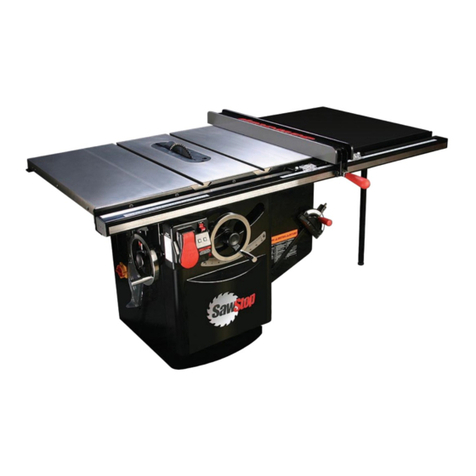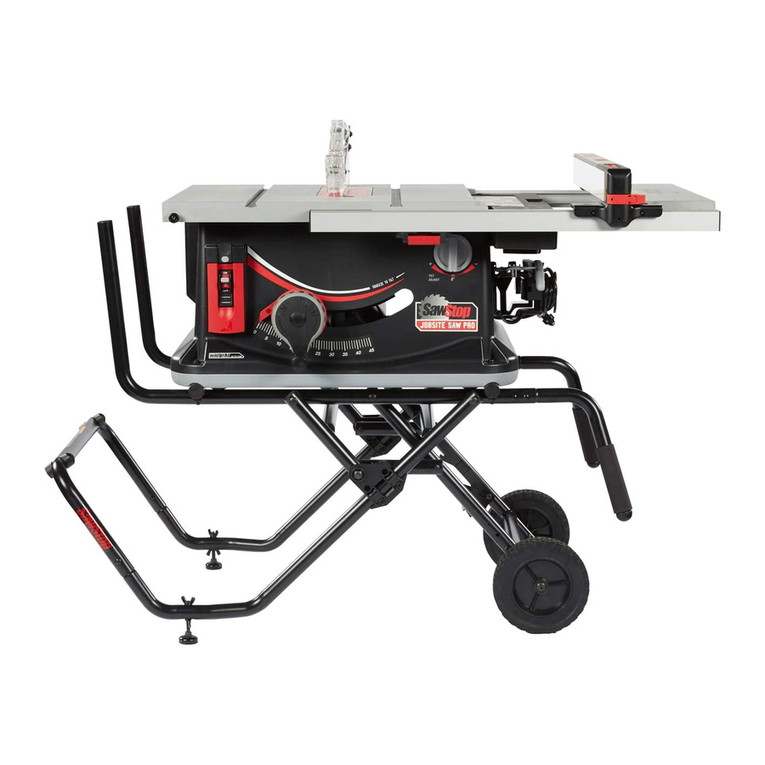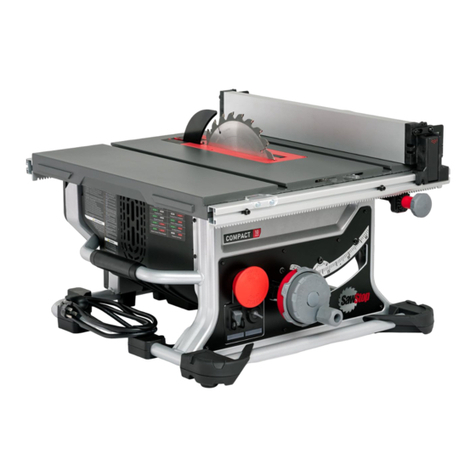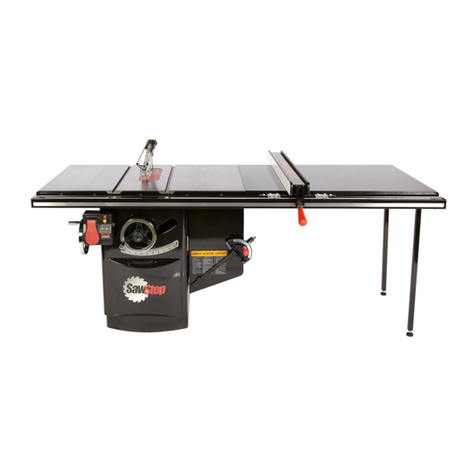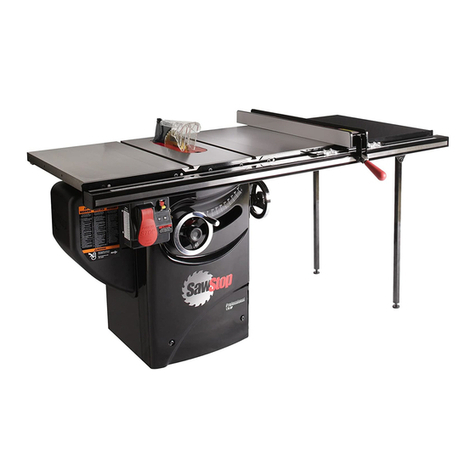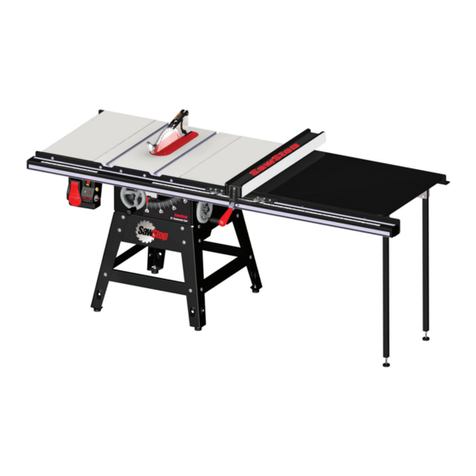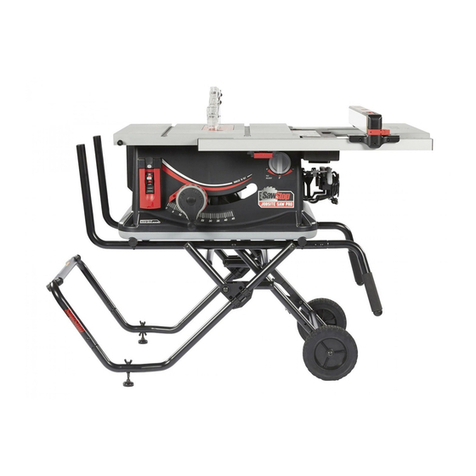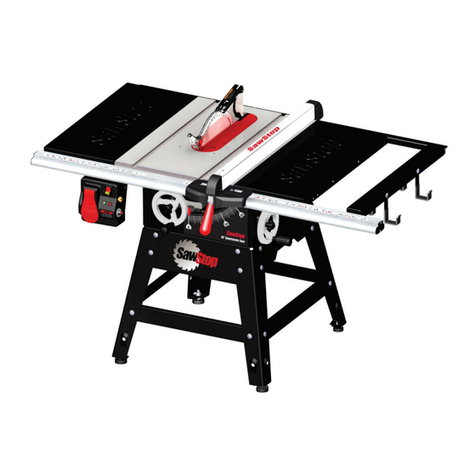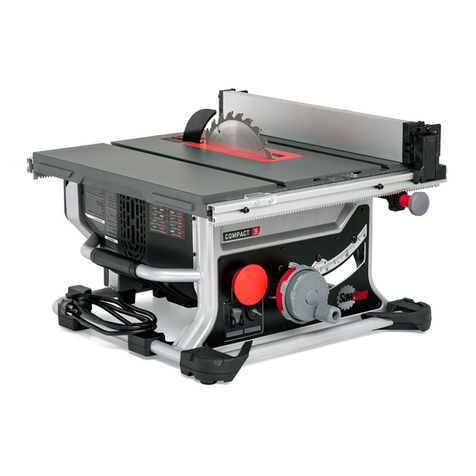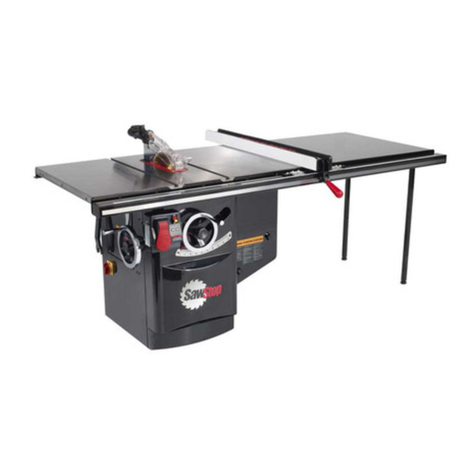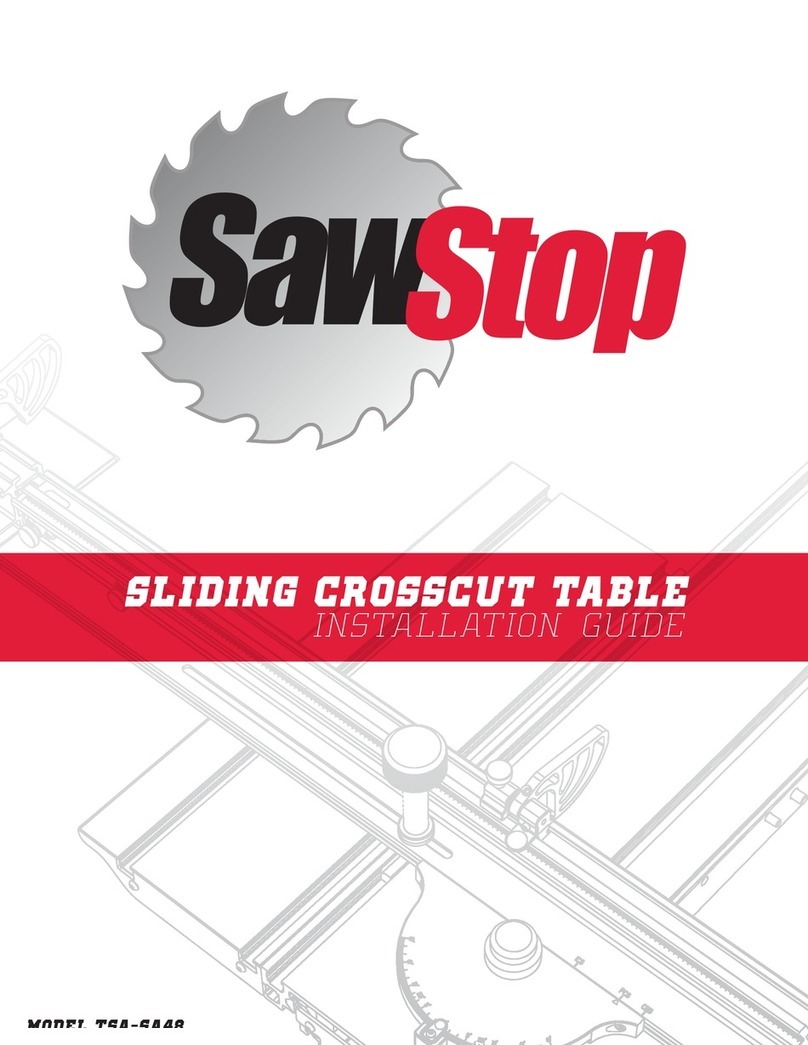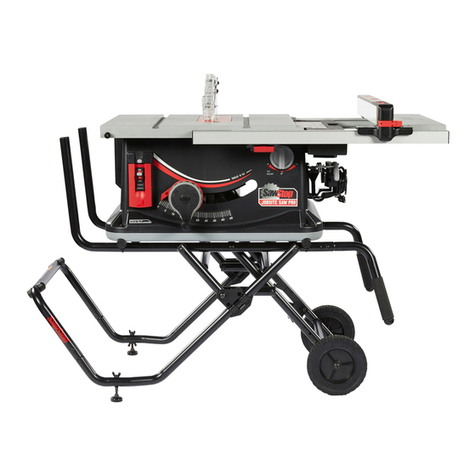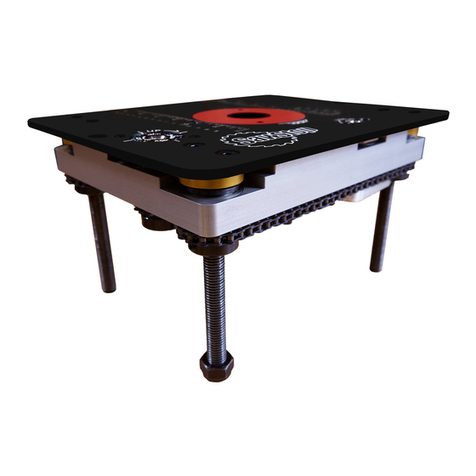
1. You must install a rip fence before using your saw. Attempting to use the saw without a rip fence could result in
serious personal injury.
2. Always use a rip fence when making rip cuts. Never perform a ripping operation freehand or a serious injury
may result.
3. Always use a push stick or push block when your hand comes within 6” of the blade. Attempting to use the rip
fence for narrow cuts without a push stick or push block could result in a serious injury.
4. Do not use the miter gauge when making rip cuts.
5. While making bevel cuts, use the fence only on the right side of the saw blade to prevent the blade from
possibly contacting the fence. The brake will activate if the spinning saw blade comes into contact with the
metal in the fence.
Safety
Warranty
SawStop warrants to the original retail purchaser of a new T-Glide Fence System - Industrial Series II from
an authorized SawStop distributor that the fence system will be free from defects in material and workmanship
for TWO YEARS from the date of purchase. SawStop warrants to the original retail purchaser of a refurbished,
demonstration or oor model T-Glide Fence System - Industrial Series II from an authorized SawStop distributor that
the fence system will be free from defects in material and workmanship for ONE YEAR from the date of purchase.
This warranty does not apply to defects arising from misuse, abuse, negligence, accidents, normal wear-
and-tear, unauthorized repair or alteration, or lack of maintenance. This warranty is void if the fence system or any
portion of the fence system is modied without the prior written permission of SawStop, LLC, or if the fence system
is located or has been used outside of the country where the authorized SawStop distributor from whom the fence
system was purchased resides.
Please contact SawStop to take advantage of this warranty. If SawStop determines the fence system is
defective in material or workmanship, and not due to misuse, abuse, negligence, accidents, normal wear-and-
tear, unauthorized repair or alteration, or lack of maintenance, then SawStop will, at its expense and upon proof
of purchase, send replacement parts to the original retail purchaser necessary to cure the defect. Alternatively,
SawStop will repair the fence system provided it is returned to SawStop, shipping prepaid, with proof of purchase
and within the warranty period.
SawStop disclaims any and all other express or implied warranties, including merchantability and tness for a
particular purpose. SawStop shall not be liable for death, injuries to persons or property, or incidental, consequential,
contingent or special damages arising from the use of the fence system.
This warranty gives you specic legal rights. You may have other rights which vary from state to state.
